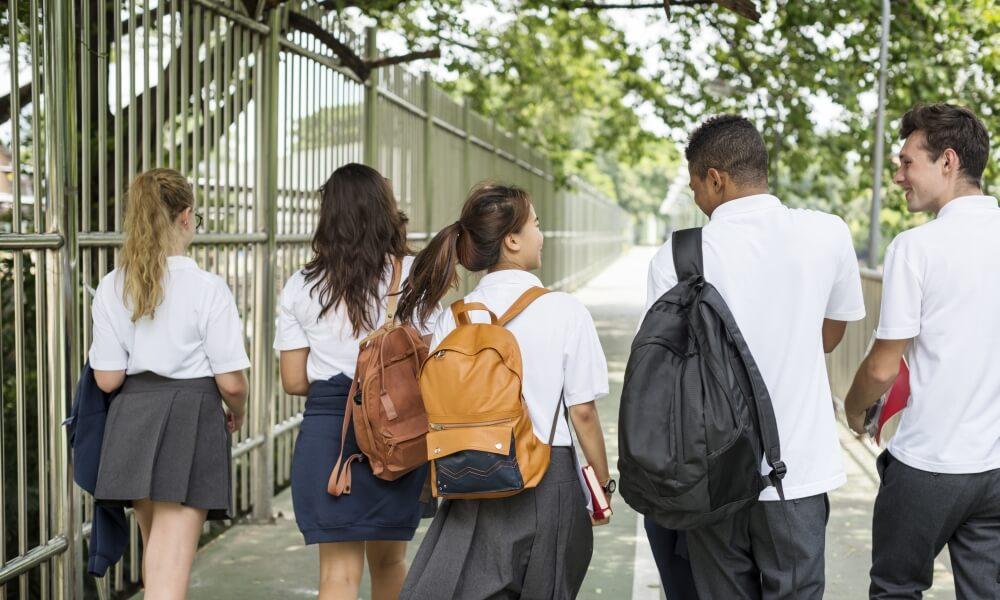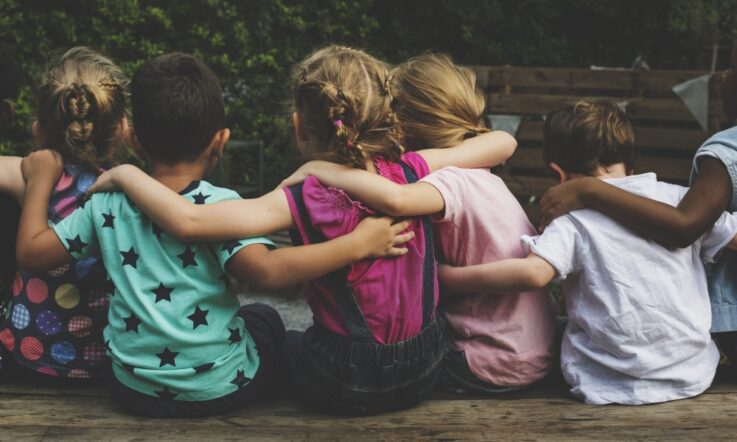Age-appropriate consent education is a mandatory part of the school curriculum in Australia. How is your school delivering on this requirement? What are the challenges you’ve experienced?
Dannielle Miller OAM is the co-founder and CEO of in-school wellbeing providers for teens Enlighten Education, which has engaged with tens of thousands of students on respectful relationships and consent education nationally. She is also the Director of Education for Women’s Community Shelters, and was a founding board director for The Sanctuary, a refuge for women and children fleeing domestic violence in north-West Sydney. In this Q&A, Dannielle shares some of the common misconceptions about relationships and consent education, the importance of schools working alongside experts, and why it’s a bad idea to have boys and girls in the same space when delivering respectful relationships and consent sessions.
You started your career teaching – thinking back to then, how has the landscape changed in relation to consent education in schools?
It’s changed dramatically, and certainly for the better. When I first started teaching 30 years ago ‘sex education’ tended to focus only on the reproductive system. We know young people want to discuss not just this, but their own experiences with relationships, sexuality, and power. Even when I co-wrote my book on dating and relationships aimed at teen girls with award-winning journalist Nina Funnell, Lovability, back in 2014 the idea of talking to teens about consent, dealing with break ups, handling crushes and so on was viewed with wariness. I recall doing media and having a well-known psychologist state that really, books like this shouldn’t be needed as teens shouldn’t be dating at all.
I think there is still a reluctance to realise that many young people are dealing with complex, unsafe relationships. Yet, 2023 research (O’Donnell et al) by the Australian Institute of Family Studies revealed that in the previous year amongst adolescents aged 18-19:
- 3 in 10 reported at least one experience of intimate partner violence.
- One in 8 experienced emotional abuse.
- One in 10 experienced physical violence.
- One in 12 experienced sexual violence.
Our teens urgently need open, authentic, shame-free and evidence-based support. If we don’t teach them, who will?
Age-appropriate consent education is now a mandatory part of the school curriculum here in Australia. You work with a lot of teachers and leaders on the ground – what are some of the difficulties they are facing in delivering on that expectation?
Not all teachers may feel completely at ease delivering this content (especially if they have their own lived experience with abuse and find the content upsetting). It is a highly specialised subject matter that requires expertise in design and delivery. Yes, I know this is a plug for my own work, but I firmly believe that if this education is done poorly, it can do more harm than good and there is a place to work alongside experts in the field.
Principals have made the point previously that they are often pressured to water down any respectful relationship and consent work they do as the area is so loaded and they will be viciously attacked if their messaging doesn’t suit the beliefs of the various lobby groups. I think that's spot on. I think some schools also struggle with managing the many voices who may wish to set the agenda for them.
What are some of the common misconceptions that educators have about relationships and consent education?
I think there are fears the students will find the work distressing. Schools often ask me if I will start my sessions with trigger warnings. No. Here’s what I do instead.
Trauma informed practice is about reducing stress and emotional agitation. Kicking off the day by pre-empting the session may be distressing simply sets up someone who may have experienced trauma to feel tense from the get-go – they are left sitting there worrying and waiting for the distress.
Firstly, connection and trust need to be developed. I begin by sharing my story and explaining what brings me to the work with them. There’s laughter (this helps put everyone at ease), moments of connection (‘Same! Me too!’) and trust is built (‘She seems to know her stuff…’). I’m modelling inclusivity (simple things like using gender neutral pronouns help here).
When we do get to content that could remind young people with trauma about their experiences, I explain some of the content may be upsetting. It’s a broader term than trigger and I think it’s less loaded (colloquially, to be ‘triggered’ is now associated with being hypersensitive).
But the key here is not to use either term as a tokenistic disclaimer.
I explain calmly and with great care (again, signalling I’m a safe person) what we could do if we feel distressed. I explain who within the school could help, I provide contact numbers for support services (and explicitly explain how to use these), I share techniques they might want to try to help emotionally regulate themselves, and I set up how the room will be kept respectful and establish my boundaries (for example, we must be aware we all come to the session with different experiences and we should be particularly mindful with our language – just as I have been). I also explain that before I talk about particularly challenging content, I’ll indicate how long that discussion will last (for example, ‘I am now going to talk you through some of the types of relationship violence. This may be upsetting to hear for some of us, it will last around 12 minutes’).
Set up this way, I’ve never had a student decide they didn’t want to join in our session. Even young people who have had extremely traumatic experiences and thought they’d find the session very hard chose to stay. Sometimes, they do decide to follow my advice and step out for 5 minutes, but they always chose to rejoin us, and tell me they found the work very respectful and healing.
I saw you comment recently on the case of a boys school that had partnered with a girls school to deliver respectful relationship and consent sessions, with both at the same time in the same room; you were saying how that approach made you feel really uncomfortable.
I am really uncomfortable with this approach.
In my work, particularly around respectful relationships and consent, we teach exactly the same content to the boys and the girls. However, this is delivered in separate spaces so that young people can discuss how these issues impact on them in a way that is trauma informed. My first priority is always ensuring that no one in the room will be made to feel threatened, or perhaps be judged.
I had a teacher recently bail me up before a presentation and say, ‘Don’t you think it’s important that the boys are actually sitting in the room hearing the girls describe how uncomfortable sexism makes them feel?’ No. I don’t think it is the girls’ job to do that emotional labour. I don’t think they should have to show their wounds in order for the boys to understand the importance of respectful relationships.
Rather, I think it’s valuable for the girls to discuss this in a safe place together and develop a sense of sisterhood so that they have strategies they can use next time they feel uncomfortable, and can have each other’s backs.
Similarly, I think it’s really important for the boys to collectively be told about how this kind of behaviour doesn’t just impact on girls and women, but also on THEM and they can explore this and ask questions with their peers.
The ‘gays and theys’ always get to choose which space they would feel safest in – and we use gender neutral pronouns throughout, include reference to LGBTQI support services, and discuss how relationship abuse may impact on the queer community in particular ways (such as through identity abuse). We don’t use terms like ‘boyfriend’ or ‘girlfriend’ but rather ‘partner’ or ‘date’. Both spaces are inclusive.
I was recently at a school and the girls had been sceptical about being separated from the boys. Midway through the session, they explained to me that they had complained prior to meeting me and now they felt dreadful because they could see this was exactly what they needed. Incredibly, they went up to the school leadership during the break and said they had been wrong and explained why having a girls’ space was valued. The day ended with absolute rave reviews from all students.
The students all then came back together after their sessions and discussed what they had learnt, shared with each other and grew together. But they did so after first being informed and having some space to share, reflect, and craft a path forward.
References
O’Donnell, K., Rioseco, P., Vittiglia, A., Rowland, B., & Mundy, L. (2023). Intimate partner violence among Australian 18-19 year olds. (Growing Up in Australia Snapshot Series – Issue 11). Australian Institute of Family Studies. https://aifs.gov.au/research/commissioned-reports/intimate-partner-violence-among-australian-18-19-year-olds
Thinking about your own school context, what are some of the challenges you’re experiencing in this area of curriculum delivery?
As a school leader, what expertise already exists among your staff in the area of consent and relationships education, and what are their training requirements? How could you draw on external expertise and evidence-based resources to inform and strengthen your approach?



